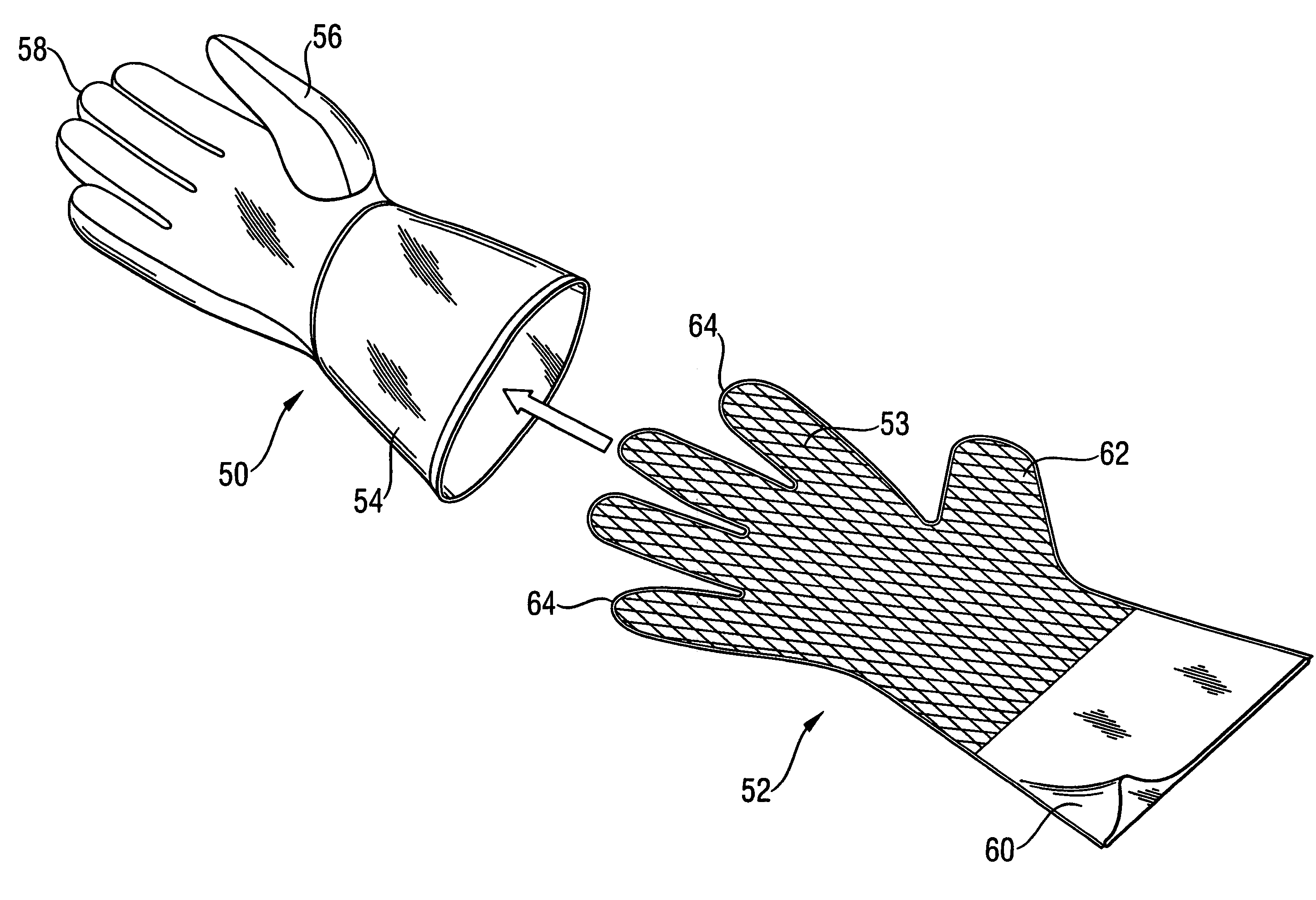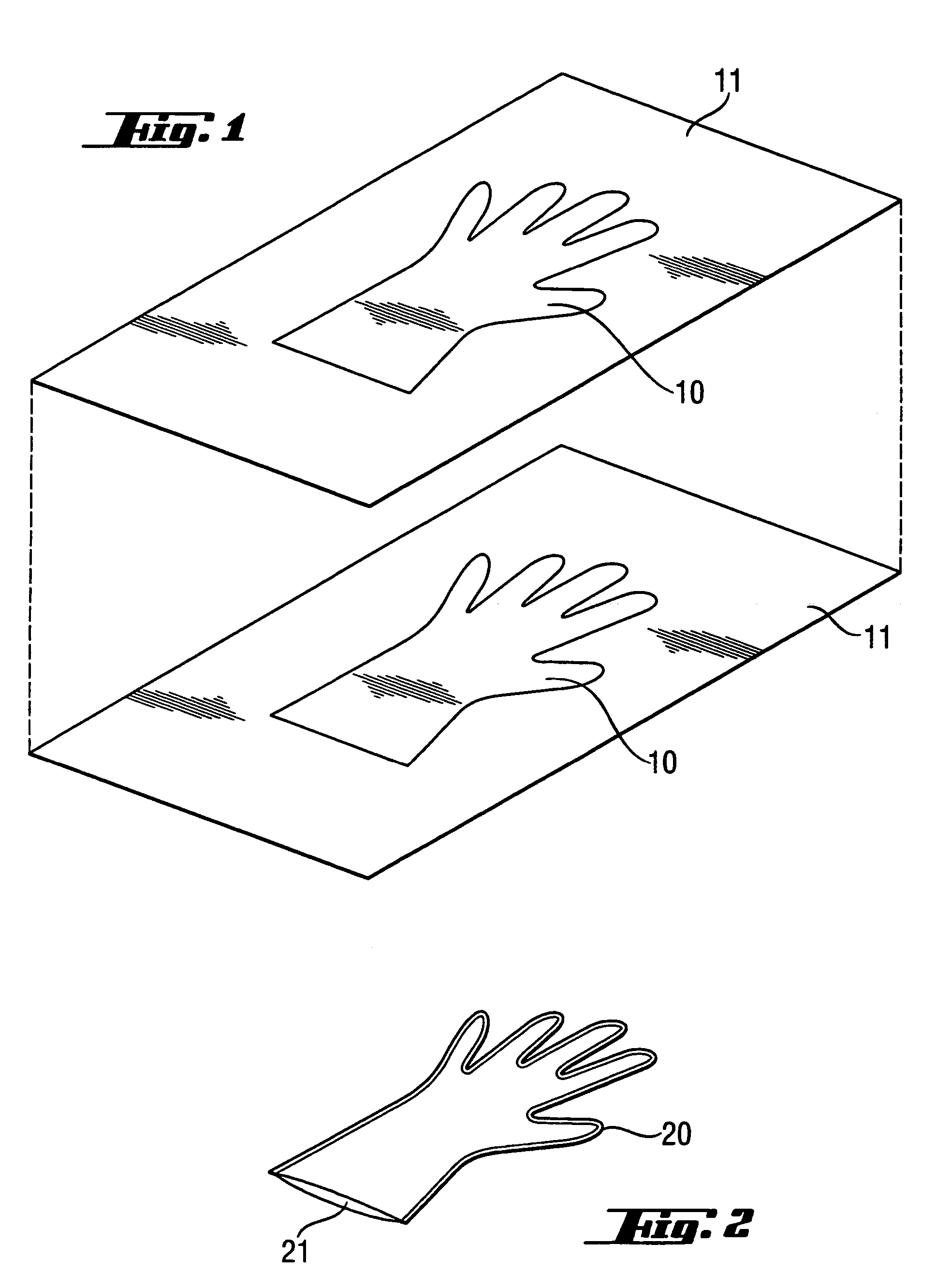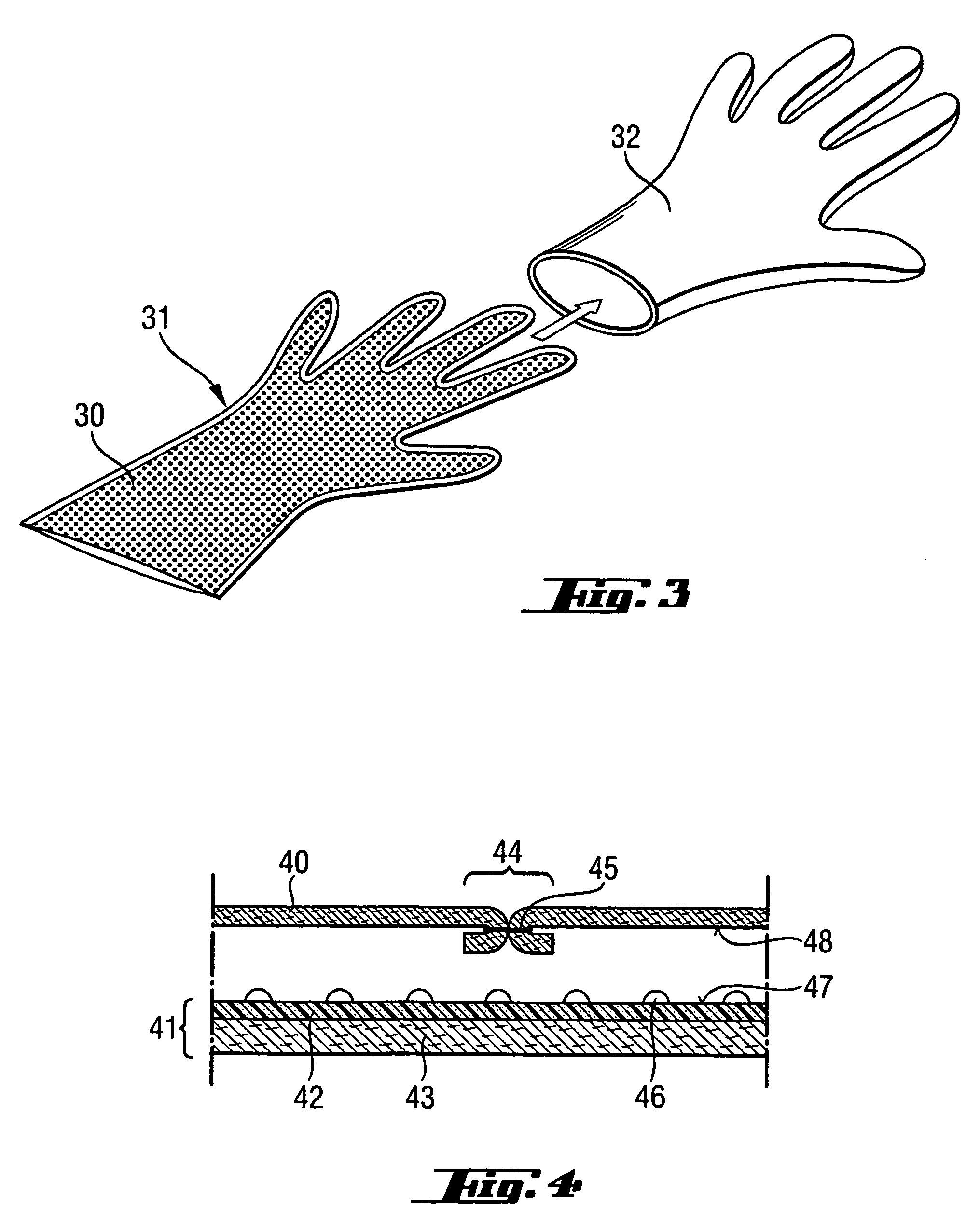Handcovering
a technology for handwear and inserts, applied in protective garments, weaving, garments, etc., can solve the problems of hand slippage, disturbing the wearer, and the fold of inserts causing substantial disadvantages, etc., to achieve heat transfer, heat transfer, and comfort. , the effect of maximizing tactility
- Summary
- Abstract
- Description
- Claims
- Application Information
AI Technical Summary
Benefits of technology
Problems solved by technology
Method used
Image
Examples
Embodiment Construction
[0027]As described above, the outer material shell of the handwear and the insert containing the functional layer are directly adhered in a way that reshapes the two dimensional insert by stretching into the three-dimensional form of the shell and thus avoiding folds and bunching. This provides a handcovering which overcomes the deficiencies in the prior art described further above.
[0028]The described direct adherence of the shell and the outer side of the functional layer insert to form a glove or mitten prevents the presence of an air layer which can act as a water vapor barrier between the shell and the functional layer insert. Furthermore the minimization of the number of layers ensures a minimum of insulation and a maximum of dexterity. For that and for better stretchability or elongation the functional layer may be directly adhered to the shell material without a protective textile backing. A compounded layer of the whole glove according to the invention, comprising of the reg...
PUM
| Property | Measurement | Unit |
|---|---|---|
| melting point | aaaaa | aaaaa |
| elongation | aaaaa | aaaaa |
| width | aaaaa | aaaaa |
Abstract
Description
Claims
Application Information
 Login to View More
Login to View More - R&D Engineer
- R&D Manager
- IP Professional
- Industry Leading Data Capabilities
- Powerful AI technology
- Patent DNA Extraction
Browse by: Latest US Patents, China's latest patents, Technical Efficacy Thesaurus, Application Domain, Technology Topic, Popular Technical Reports.
© 2024 PatSnap. All rights reserved.Legal|Privacy policy|Modern Slavery Act Transparency Statement|Sitemap|About US| Contact US: help@patsnap.com










